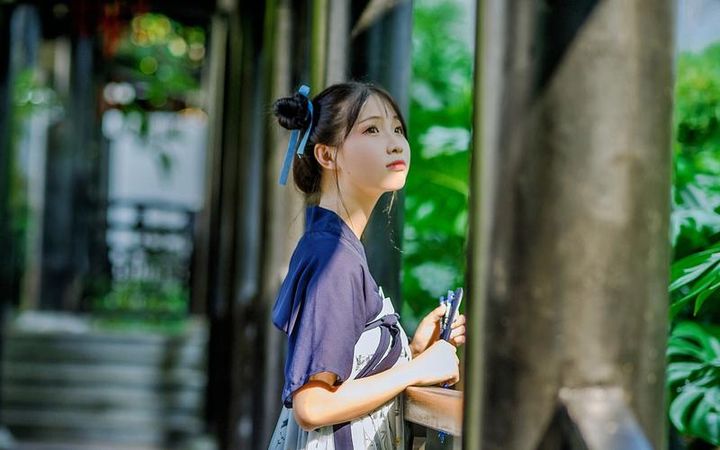Hanfu dress, a captivating manifestation of China’s ancient and illustrious cultural heritage, stands as a testament to the nation’s artistic finesse and aesthetic sensibilities. In this comprehensive blog, we embark on an immersive journey through the labyrinth of hanfu, unravelling its profound history, intricate craftsmanship, and the profound impact it wields in contemporary times.
See Also: www.buyhanfu.com

The Historical Tapestry of Hanfu Dress
Hanfu’s story unfolds across the vast expanse of Chinese history, shaping and being shaped by the ebb and flow of civilizations. It emerged during the Shang Dynasty as a rudimentary form of clothing, gradually evolving into a sophisticated system of attire over the centuries.
The Qin Dynasty brought about a degree of uniformity in hanfu styles, emphasizing simplicity and functionality. However, it was during the Han Dynasty that hanfu truly flourished, with a plethora of styles and designs that reflected the prosperity and cultural sophistication of the era.
For instance, the elaborate court dress of the Han Dynasty featured wide sleeves and long flowing robes, adorned with intricate embroideries and precious gemstones, symbolizing the power and prestige of the ruling class.
Hanfu in the Tang and Song Dynasties: A Glimpse of Opulence and Elegance
The Tang Dynasty marked a golden age for hanfu, characterized by bold colors, lavish fabrics, and innovative designs. The influence of foreign cultures led to a fusion of styles, creating a unique and vibrant aesthetic. Women’s hanfu during this period often included low-cut bodices and voluminous skirts, exuding a sense of sensuality and confidence.
Conversely, the Song Dynasty witnessed a shift towards more understated and refined hanfu. The focus was on simplicity and elegance, with clean lines and muted colors. The use of silk and satin in subtle patterns showcased the refined taste of the time.
The Intricate Craftsmanship of Hanfu Dress
The creation of hanfu is a labor-intensive process that demands the highest level of craftsmanship and attention to detail. From the selection of fabrics to the execution of embroidery and tailoring, every step is a meticulous art form.
Skilled artisans painstakingly weave and dye the fabrics to achieve the desired colors and textures. Embroidery techniques, such as satin stitch, cross-stitch, and appliqué, are employed to embellish the hanfu with exquisite patterns and motifs.
For example, the phoenix and peony motifs are commonly used to represent nobility and beauty. The delicate stitches and the use of precious threads add to the opulence and value of the dress.
The Role of Accessories in Complementing Hanfu
Hanfu is not complete without the appropriate accessories. Headpieces, hairpins, belts, and footwear all play a crucial role in enhancing the overall look and significance of the attire.
The elaborate headdresses worn by women during special occasions symbolize their status and marital status. Belts, often decorated with jade or metal ornaments, add a touch of elegance and define the waistline.
Hanfu Dress and Cultural Symbolism
Hanfu is not merely a form of clothing; it is laden with deep cultural and symbolic meanings. It reflects the values, beliefs, and social hierarchies of ancient Chinese society.
The colors used in hanfu have specific connotations. White is associated with mourning, while red symbolizes happiness and good fortune. The patterns and motifs chosen also convey messages of auspiciousness, morality, and filial piety.
For instance, the use of the lotus flower pattern represents purity and enlightenment.
The Resurgence of Hanfu in Modern Times
In recent years, there has been a remarkable resurgence of hanfu in contemporary Chinese society. Young people are embracing this traditional dress as a means of reconnecting with their cultural roots and expressing their identity.
Hanfu-themed events, fashion shows, and cultural festivals are now commonplace. Social media platforms have played a vital role in promoting hanfu, allowing enthusiasts to share their passion and inspire others.
Challenges and Opportunities for the Future of Hanfu
While the revival of hanfu is a heartening trend, it also faces certain challenges. Issues such as authenticity, commercial exploitation, and the need for greater public understanding pose obstacles to its sustainable development.
However, these challenges also present opportunities for innovation and conservation. By fostering a sense of respect for traditional craftsmanship and promoting educational initiatives, the future of hanfu can be bright and promising.
Hanfu’s Global Impact and Potential
As the world becomes more interconnected, hanfu has the potential to make a significant impact on the global fashion stage. Its unique blend of elegance, history, and artistry has the power to captivate audiences beyond China’s borders.
Collaborations between international designers and Chinese artisans could lead to new interpretations and adaptations of hanfu, bringing it to a wider audience and promoting cultural exchange.